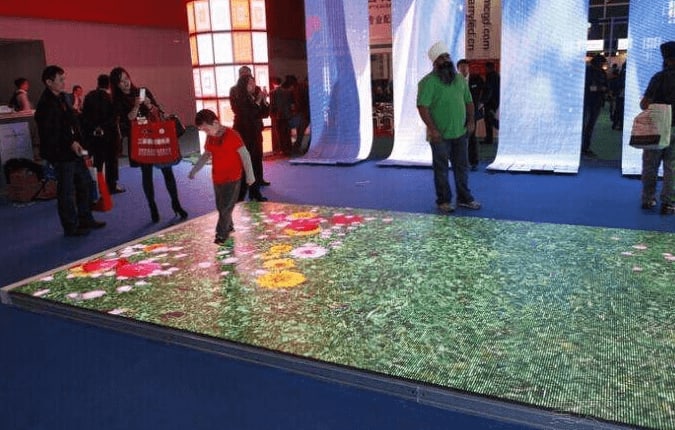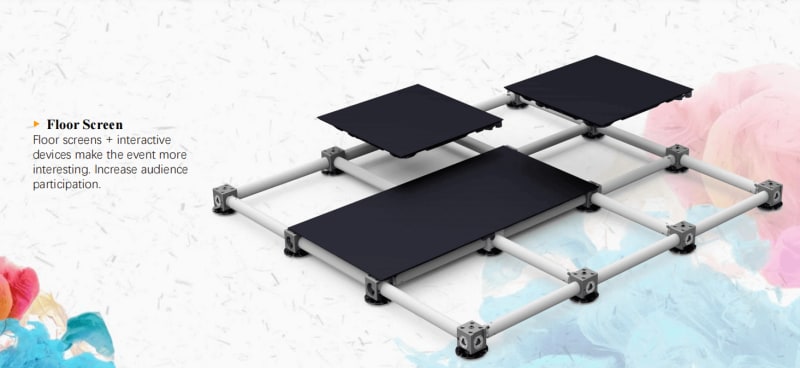The traditional large LED screen faces the audience in the form of one-way communication, which is not only passive, but also gradually lacks dynamics and innovation. With the vigorous development of LED display technology, audiences now interact with LED electronic large screens in more and more ways. So what are the main ways to achieve human-screen interaction on LED displays at this stage? Take you 8 minutes to understand the working principle of LED interactive floor tile screen.
LED electronic screens can be used for human-screen interaction in a variety of ways. The following are some common ways:

Touch screen technology: LED electronic screens can have built-in touch screen technology, allowing users to interact with content by touching the screen. This technology is commonly used in information kiosks, self-service ordering systems, exhibition halls and other occasions.
Gesture recognition: Using camera and image recognition technology, the LED screen can capture the user's gestures and movements to achieve interaction. For example, users can use gestures to swipe, zoom, rotate, and more, just like they would on a smartphone or tablet.

Remote control: LED screens can be paired with remote controls or smartphone apps, allowing users to control on-screen content through these devices, such as switching channels, adjusting volume, playing media, etc.
Voice recognition: Some LED electronic screens have voice recognition capabilities, and users can use voice commands to control the content on the screen. This technology is commonly used in smart TVs and digital assistants.

Mobile App Interaction: Developers can create mobile apps that allow users to interact with LED screens through their smartphones or tablets. These applications can allow users to send content, control media playback, or participate in multiplayer games with other users.
AR/VR interaction: Through augmented reality and virtual reality technology, more vivid and three-dimensional interactive scenes can be presented on the big screen, allowing users to participate immersively.
Sensor technology: LED screens can be equipped with various sensors, such as motion sensors, temperature sensors and light sensors, to adjust the display content according to the conditions of the surrounding environment. This approach can be used for digital billboards, outdoor screens and smart building control systems.

The methods listed above are some common technologies that enable LED electronic screens to achieve human-screen interaction. The specific implementation depends on the application requirements and technical feasibility. Different application scenarios may use different technologies to achieve interactive experiences.
Thank you for watching. I hope we can solve your problems. Sostron is a professional LED display manufacturer. https://sostron.com/about We provide all kinds of displays, display leasing and display solutions around the world. If you want to know: The advantages of surface-mounted full-color LED displays are immeasurable. Please click read.
Follow me! Take you to know more about led display knowledge.
Contact us on WhatsApp:https://api.whatsapp.com/send/?phone=8613570218702&text&type=phone_number&app_absent=0


Top comments (0)